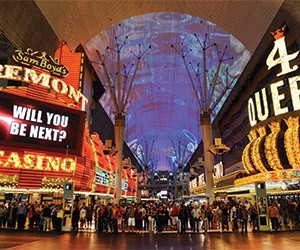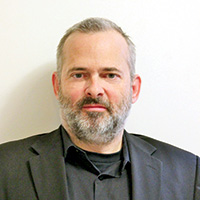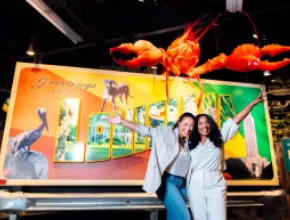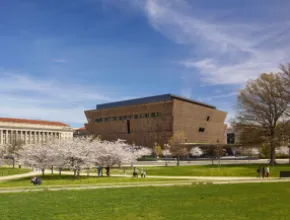In the Entertainment Capital of the World, headline acts, lavish theatrical shows, nightclubs and spectacular visual displays define the culture. From Jennifer Lopez, Brittany Spears and Elton John to Cirque du Soleil’s seven permanent shows to the Fountains of Bellagio and the mesmerizing lights, holographics and puppetry of the Lake of Dreams at Wynn Las Vegas, it’s showtime all the time in larger-than-life Las Vegas.
Vegas also offers a compelling collection of more traditional artistic and cultural venues. Both significantly contributing to the revival of Downtown Las Vegas, the Neon Museum and Mob Museum are the best known examples, along with other diverse options for broadening the cultural agenda.
Artful Encounters
As Tarissa Tiberti, executive director of Bellagio’s Gallery of Fine Art, recently told MGM Resort’s M Life magazine, “Art is entertainment in its own right—cultural entertainment, specifically.” Located in the Promenade Shops across from the resort’s main pool entrance, the gallery offers daily docent-led tours along with private tours for groups of 10 or more.
Hailed by one art publication as a “cultural destination of worldwide significance” and “a benchmark for enlightened corporate involvement with the arts on a global level” when unveiled in 2009, the $40 million collection of fine art at CityCenter is a ready option for self-guided tours. More ambitious delegates, meanwhile, can take the Spa at ARIA’s intensive 60-minute Indoor Hike/Art Walk program.
Art continues to play a major role in the expanding renaissance of Downtown Las Vegas, where The Las Vegas Arts District offers distinct visitor appeal. Also known as 18b, this 18-plus block neighborhood features an eclectic mix of galleries, boutiques, bars and restaurants.
Groups seeking a break from the Strip—and broader exposure to the Vegas scene—can head to the district’s Arts Factory and Art Square. Comprising three updated vintage buildings and an outdoor art garden, this dynamic hub of studios, galleries and creative business incorporates unique venues such as the Cockroach Theatre Company for plays, and laid-back venues including Artifice and MINGO Kitchen & Lounge.
Featuring a growing collection of murals and outdoor art, the Arts District is also home to the First Friday festival. Launched in 2002 and held on the first Friday of every month, the event, now attracting more than 20,000 people, features food, drink, music, visual performances and art for sale. Preview Thursday, held the day before, offers a focused opportunity to see and buy artwork. Also in the district is Antique Alley, a collection of more than 20 independent antique and vintage stores.
Just beyond the district lies Symphony Park, the 61-acre master-planned neighborhood anchored by the Cleveland Clinic Lou Ruvo Center for Brain Health and its attached Keep Memory Alive Event Center.
Also here is the $450 million Smith Center for the Performing Arts. Opened in 2012, this Art Deco-inspired, two-stage venue features year-round programming ranging from Broadway shows to rock, cabaret, classical music and jazz. Versatile rental facilities include the 2,050-seat Reynolds Hall, the Grand Lobby, Upper Lobby and conference rooms.
Public art can be found across the city, such as artist Marco Cochrane’s Bliss Dance sculpture in MGM’s new The Park district. Standing 40 feet tall, the stainless steel mesh figure of a dancing woman is LED-illuminated at night. Downtown, The Las Vegas Signs Project, launched in 1996 by the Neon Museum and the City of Las Vegas, features nine restored vintage signs along a stretch of Las Vegas Boulevard. Highlights include the Hacienda Hotel’s “Horse and Rider” and “Silver Slipper” signs.
PageBreak
Under its $70 million LED canopy, the pedestrian-only Fremont Street Experience, which ignited Downtown’s revival in 1995, remains a hot draw for its vintage casinos, outdoor programming and horizontal SlotZilla zipline experience.
Vegas Wonders
From the Atomic Age to superstar entertainers, the rich history of Las Vegas comes alive at unique area museums.
Born Wladziu Valentino Liberace in 1919, Liberace first played Las Vegas in 1944 at the Last Frontier. Over the next four decades, the flamboyant entertainer played sold-out residencies at the Flamingo, Riviera and Las Vegas Hilton before his final two-week run at Caesars Palace in 1986, one year before his death.
Opened by Liberace himself in 1979, his namesake Vegas museum once drew more than 100,000 visitors a year before closing in 2010. Now the sequined superstar is back, on two fronts. In March 2016, Clark County gave his former residence, the Liberace Mansion, historic designation. Located between the University of Nevada, Las Vegas (UNLV) and McCarran International Airport, the house will reportedly be available for tours, events and other programs.
Then, in April, the Liberace Garage debuted at the Hollywood Cars Museum in Vegas. Opened two years ago, the museum features a world-class collection of cars from the movies and TV, including five James Bond vehicles.
In collaboration with the Liberace Foundation for the Performing and Creative Arts, which maintains Liberace’s brand and estate, the permanent exhibition of automobiles from Liberace’s stage acts includes the red, white and blue Rolls convertible that he flew out of via high-wire cables during his 1976 bicentennial shows at the Hilton, and the 1961 Rolls-Royce Phantom V from his Hilton act, featured in HBO’s Behind the Candelabra with Michael Douglas as Liberace.
Along with tours, the venue also offers an event stage, featuring one of Liberace’s pianos.
Between 1950 and 1951, millions of American television viewers were captivated by a different spectacle entirely—the Kefauver Committee hearings on organized crime. Exposing mob influence in gaming and business for the first time, the hearings included a stop in Las Vegas, where they were held in the city’s federal courthouse.
Today, the original Kefauver courtroom is the centerpiece of the Mob Museum, or more fully, The National Museum of Organized Crime and Law Enforcement. Housed in the former Depression-era courthouse and post office, the museum features three floors of interactive exhibits on organized crime, with rental options that include the courtroom and full buyouts.
Close to the UNLV campus, the Smithsonian-associated National Atomic Testing Museum showcases 70 years of nuclear history, with experiences including the simulation of an above-ground blast, among other options.
The ultimate Las Vegas cultural attraction is Springs Preserve—the city’s original water source. Located west of Downtown Las Vegas, the 180-acre site, listed on the National Register of Historic Places, features exhibits, galleries, hiking trails, live animal shows and botanical gardens.
Also home to the 70,000-square-foot Nevada State Museum, Las Vegas, the site is run by the Las Vegas Valley Water District, the agency that manages the city’s water and promotes conservation—which are equally keys to both the future of Las Vegas and the past.






